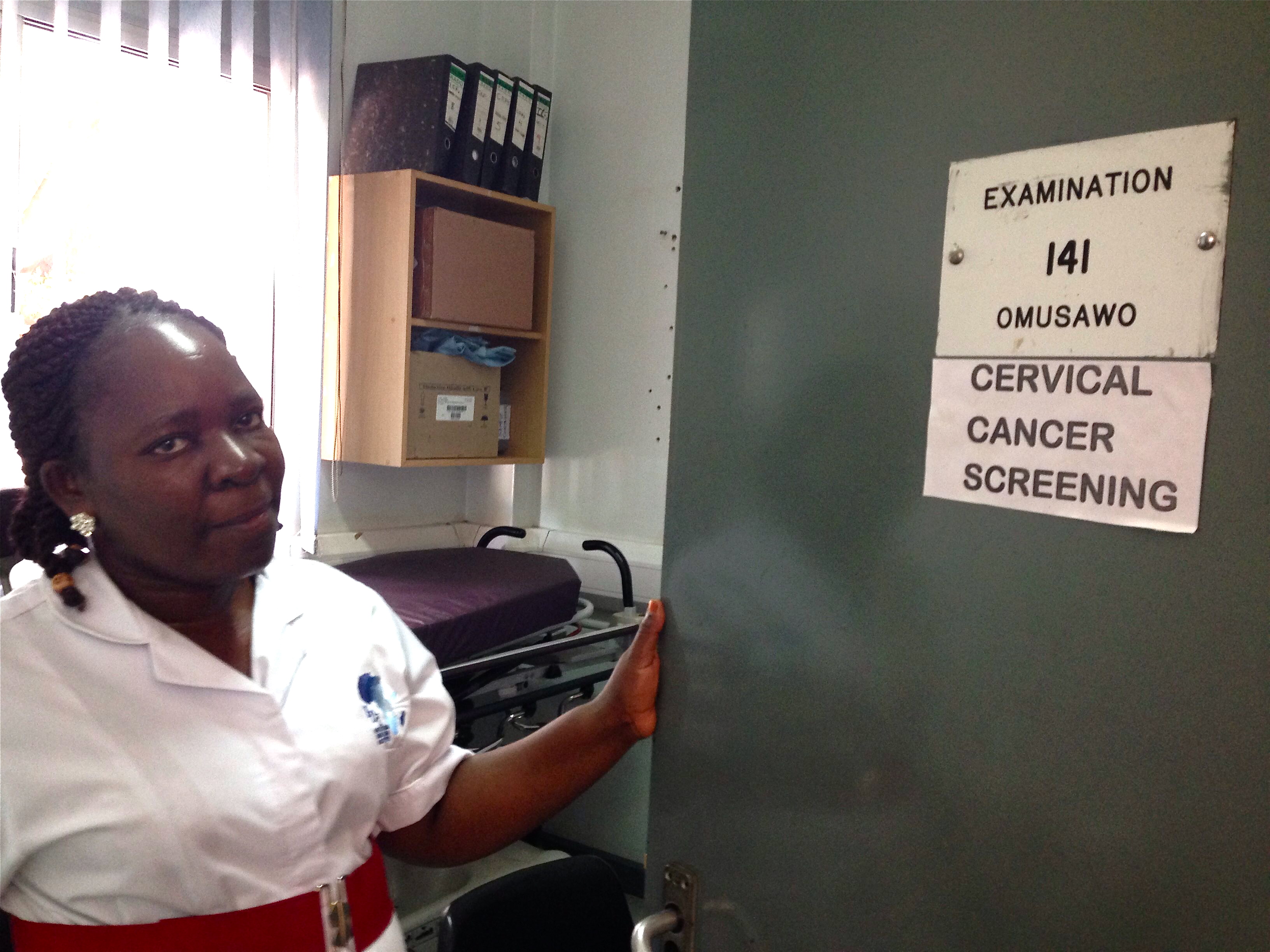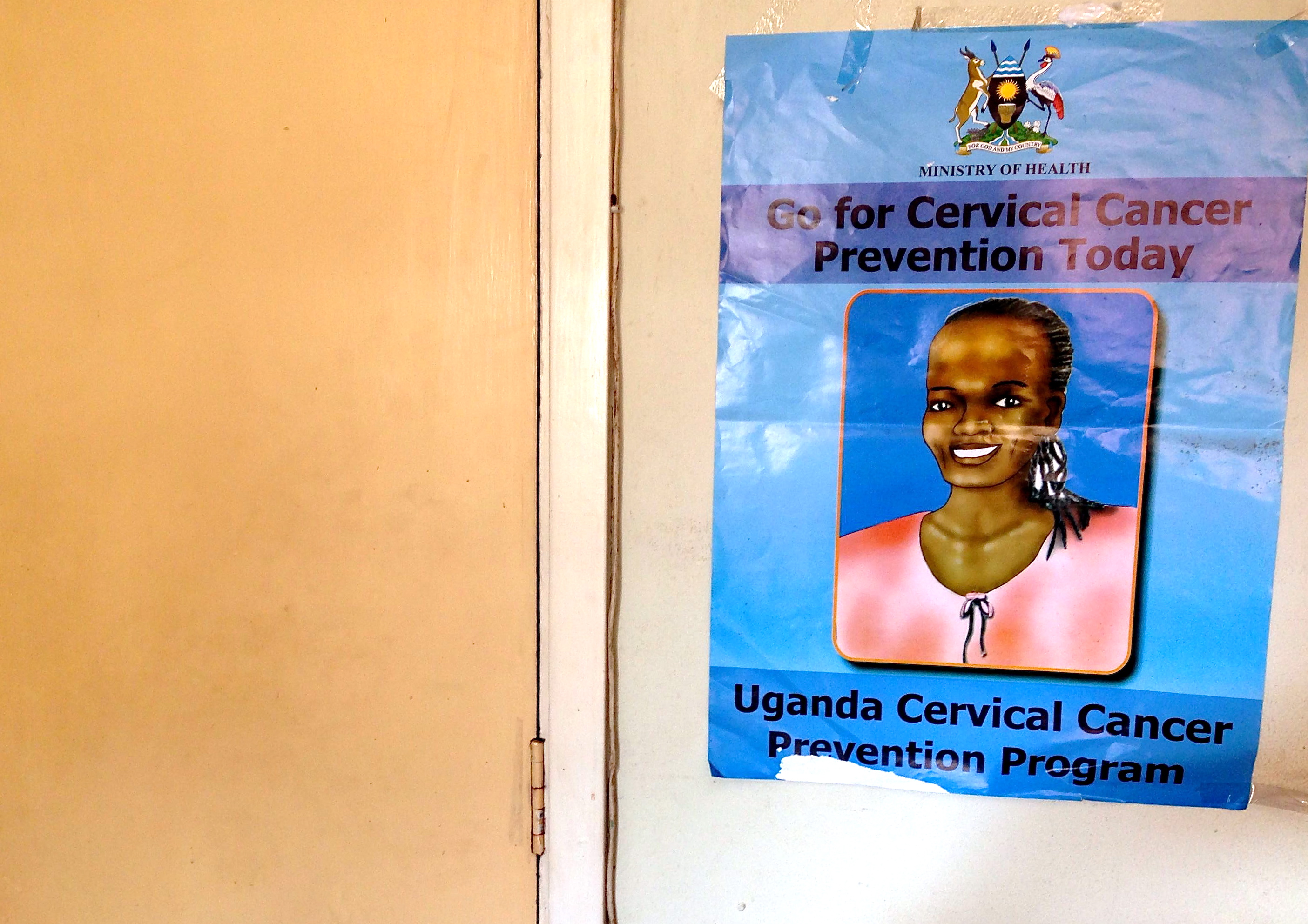
A whiff of sour air greets the newcomer who steps into Josephine Nakajubi's poky examination room. The silver tray across from the room's maroon examination bed is sparsely equipped with metallic probe-like instruments and hand sanitizer. On the floor next to the tray is a large plastic container of acetic acid, the source of the room's pungency. The acetic acid—also known as common table vinegar—is essential to Nakajubi's work. Her examination room is reserved explicitly for screening women for cervical cancer.
"What motivates me to come and work is because I want to help out people," Nakajubi, a nurse, said. "I don't want to see them suffering with advanced cancers. Why should they suffer, yet I can do something? I want to see people helped at an earlier stage."
Nakajubi's examination room is nestled along one of the sun-lit corridors of the Infectious Disease Institute (IDI), a not-for-profit organization within Uganda's Makerere University that operates an HIV clinic at their Kampala headquarters. Using "visual inspection"—a screening that involves applying acetic acid to a cervix in order to highlight any potentially problematic lesions in the area—Nakajubi screens as many as 100 women in a month.
The women she sees, however, are rarely in the IDI clinic for the purpose of being screened for cervical cancer. Her patients are mostly HIV positive and have more often come to IDI for help in managing this disease. Nakajubi recruits her patients by chatting with them about her screening services while they wait for their other appointments, but, she admits, they are often not persuaded.
"It's not easy to convince them," she said. "I can talk to like 10 (women) and I can get like 2 out of 10 who have accepted to come for the procedure. If they don't accept, it's not easy. I have to keep on talking, talk every day, every day."
Cervical cancer is caused by the human papillomavirus, or HPV, a sexually transmitted infection. There are over 100 different strains of HPV and only several of them (strains 16 and 18 are considered to be particularly high-risk) develop into gynecological cancers if left undetected. According to the Center for Disease Control, most sexually active women will contract HPV at some point in their lifetime, but in the majority of these cases the infection will clear up on its own. However, HIV positive women who contract the cancer-causing strains of HPV have a more elevated risk of developing cervical cancer than women without HIV who contract the same strains.
In Uganda, the prevalence of HIV had reached an all-time low in 2006 with an estimated 6.3 percent of the total population living with HIV. However, according to the UN's AIDS report this number has risen by 2012 to 7.2 percent—1.4 million people in all, over half of whom are women.
Nakajubi explains that many of the women who come to her clinic are more comfortable with an HIV diagnosis than one for cancer. She says that although she tries to explain that she screens women for the purpose of trying to catch any potential problems early, talk of cancer tends to instill a lot of anxiety in many of her patients.
"Some of them fear the results," she said. "They say, I'd rather remain HIV positive, I'm used to it, but now you want to tell me I also have the cancer? I will die very soon."
In her experience, the women Nakajubi sees start to feel more comfortable with the idea of being screened for cervical cancer after she has spent time with them explaining the procedure. In her opinion, more health education, or, "sensitization" in her words, around screening and prevention could really help Uganda's high rate of cervical cancer.
Nakajubi has considered giving talks at her church to raise awareness about the disease. It is the number one cause of female cancer deaths in Uganda, killing approximately 2,275 women in the country each year, according to the WHO's 2012 GLOBOCAN report. But, she says, she is so busy at her clinic and she lacks the basic resources needed for an educational outreach, such as diagrams and informational pamphlets translated in local languages; she's not sure how to start.
"We should not wait for people to come," she said. "We should even start from the places where we stay and create awareness. But I don't know how I can do it."




